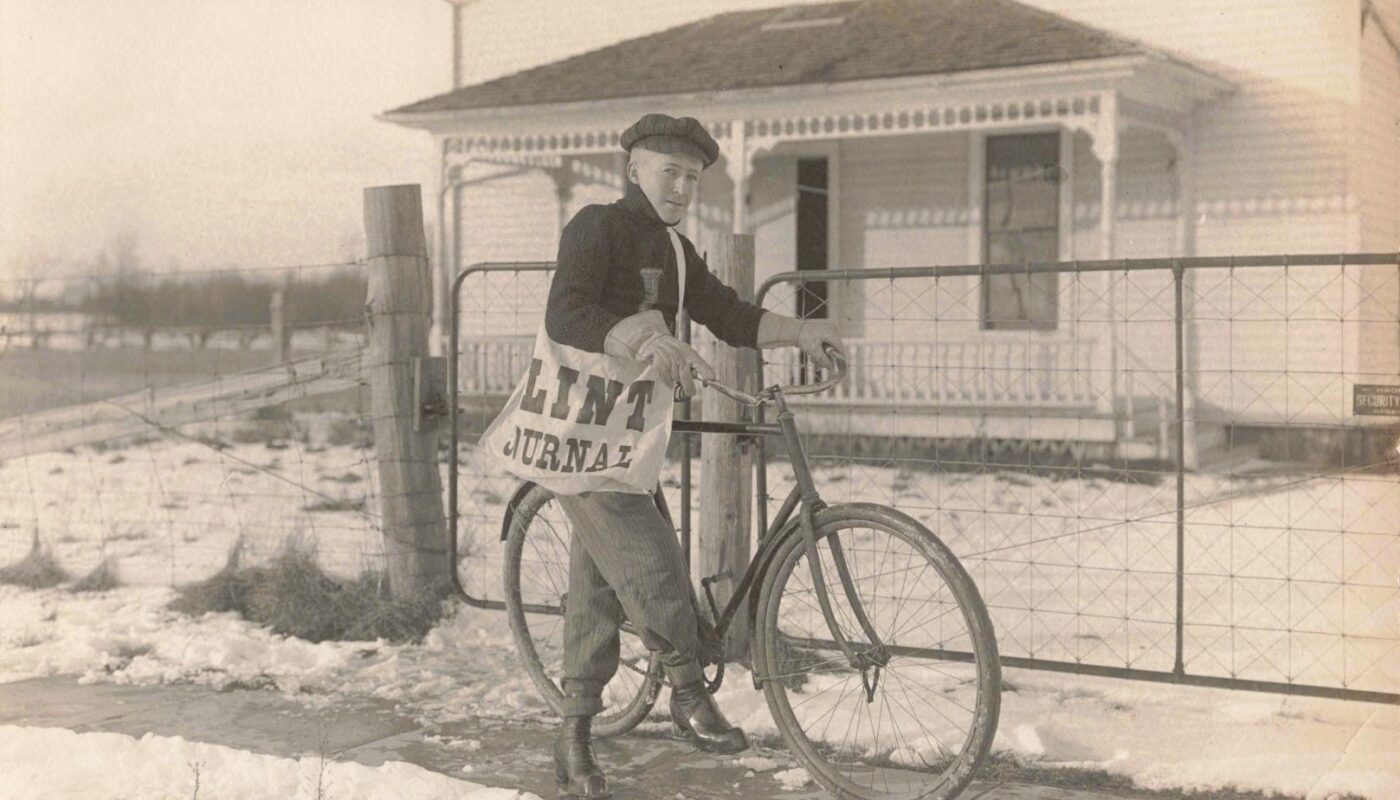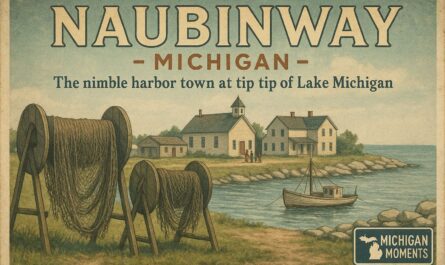Lapeer Michigan history reflects the growth of a small Midwestern town shaped by railroads, industry, and community institutions. Located in Michigan’s Thumb region, Lapeer’s early 20th-century development is still visible today in its historic downtown, century-old courthouse, and long-standing churches and schools. From cigar factories to Christian radio broadcasts, Lapeer built a civic identity grounded in steady progress and public service.
Table of Contents – Lapeer Michigan History
Video – Lapeer Built a Castle and Rolled Cigars—Who Knew?
Michigan’s Oldest Courthouse and a Name
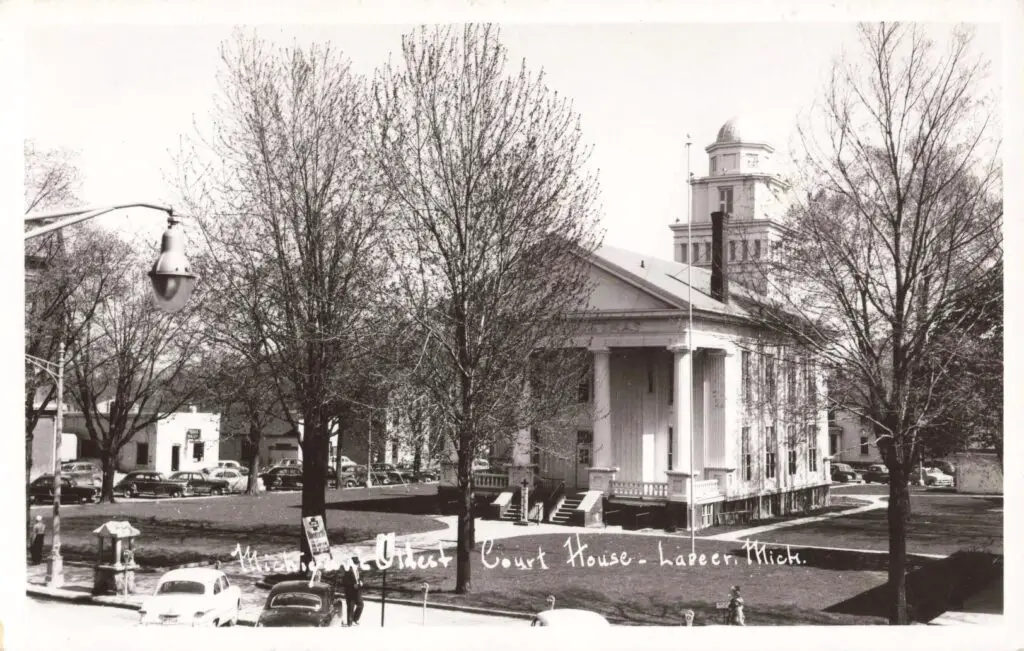
Lapeer was first settled in the 1830s by Alvin Hart and Jonathan White. They established twin settlements on either side of a swamp, which later unified as Lapeer. The name may come from the French word le pierre—meaning “the stone”—referencing the rocky Flint River. In 1839, Hart constructed the first courthouse, a Greek Revival building that still stands today. It holds the distinction of being one of the oldest continuously used courthouses in Michigan. This courthouse, with its white columns and brick foundation, remains a civic symbol in the heart of downtown.
Railroads and Industry Power a Growing City
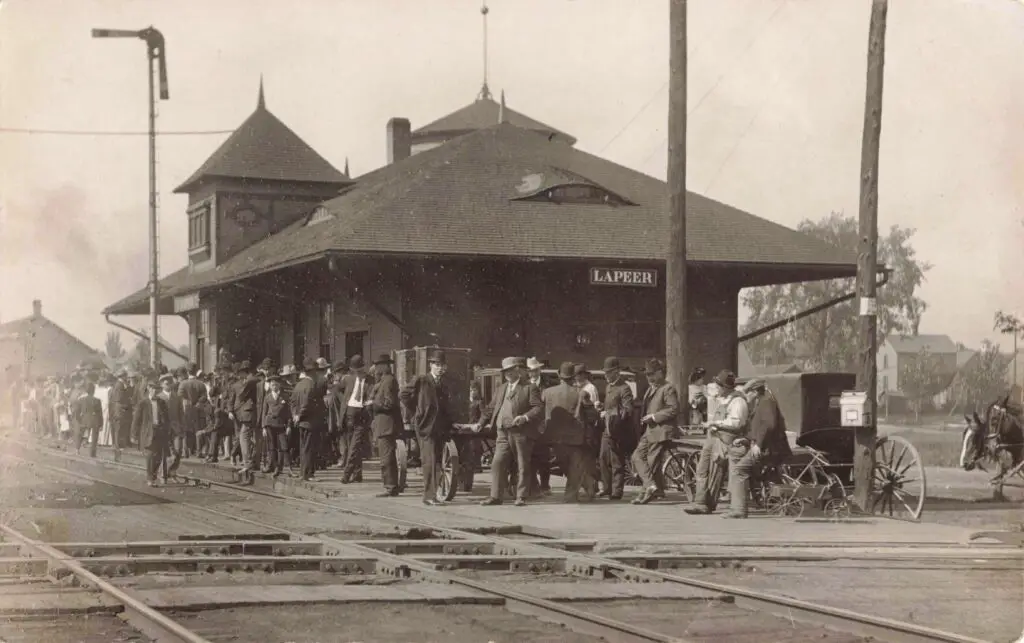
The arrival of railroads in the 1870s transformed Lapeer Michigan history as an economic powerhouse in the region. The Grand Trunk Railroad reached town in 1871, followed by the Michigan Central in 1872. These lines connected Lapeer to Detroit, Chicago, and other major markets. Photos from the early 1900s show the Grand Trunk depot and Michigan Central station serving freight and passengers. Rail was essential not only for travelers, but also for shipping locally made goods.
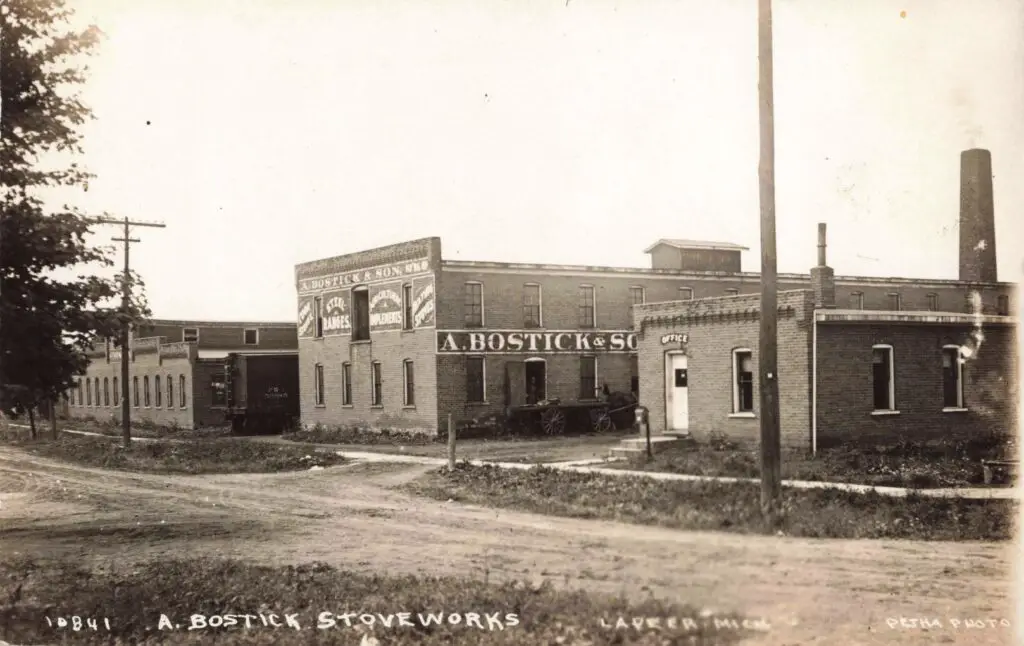
As lumbering declined, new industries emerged. The A. Bostick Stove Works, opened in 1901, became a key employer. Bostick’s factory turned out steel ranges and iron stoves, and the company had its own rail spur for shipping. Other manufacturers like the Lapeer Cigar Company also relied on the railroad. In one photo, workers roll cigars by hand at long factory benches under hanging lamps. These small factories offered jobs, training, and a steady paycheck for many families.
The Churches and Radio Station That Built Community
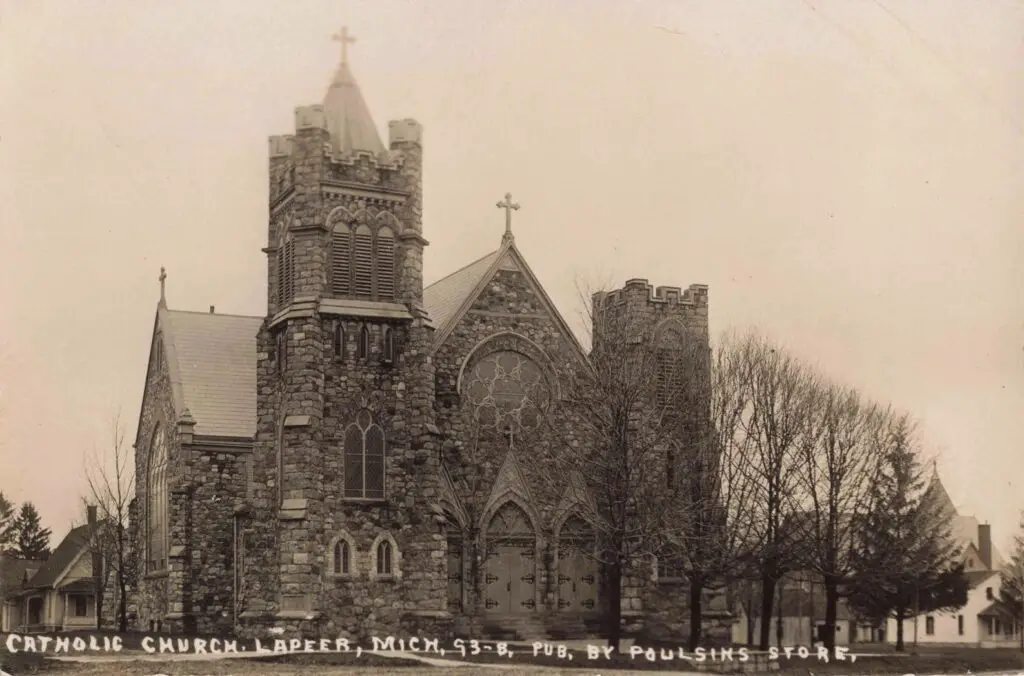
Churches were some of the first institutions established in Lapeer. By the mid-1800s, Congregational, Methodist, Baptist, and Catholic congregations had built churches throughout town. These buildings served not only as places of worship, but as gathering points for meetings, charity work, and community events.
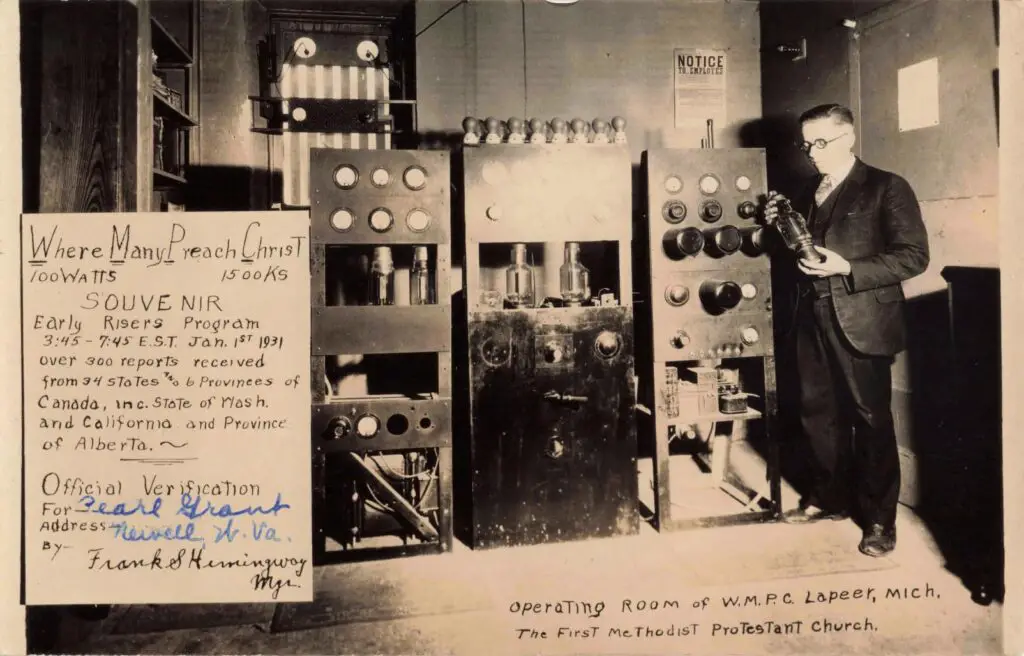
One unique institution stands out. In 1926, Reverend Frank Hemingway founded WMPC Radio, which still operates today on AM 1230. It is believed to be the oldest continuously broadcasting Christian radio station in the country. The original transmitter, housed in a church basement, sent gospel messages throughout the area. A historic photo shows a young engineer at the control board, surrounded by tubes, dials, and wires. Lapeer’s airwaves were among the earliest to broadcast Christian programming in Michigan.
A State Home and Its Lasting Impact
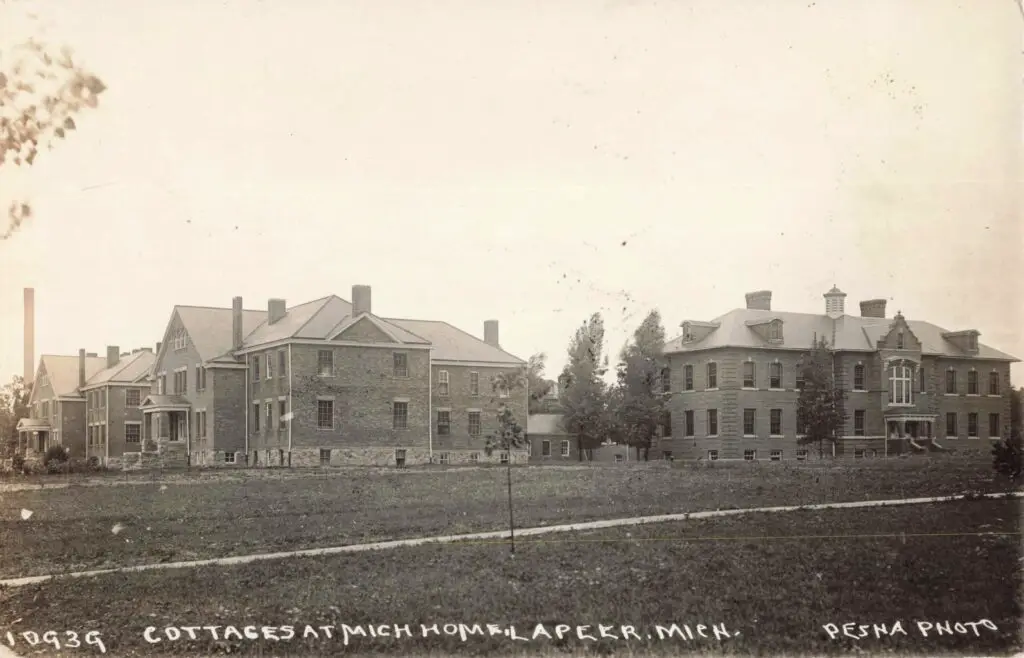
One of Lapeer’s most significant elements in Lapeer Michigan history is the state home. One of the more significan employers in the early 20th century was a state institution. The Michigan Home for the Feeble Minded opened in 1895 just north of town. Known later as Oakdale, it was a sprawling residential and work campus for people with developmental disabilities. By 1904, the main administration building—referred to as “the Castle”—was completed using local bricks and limestone.
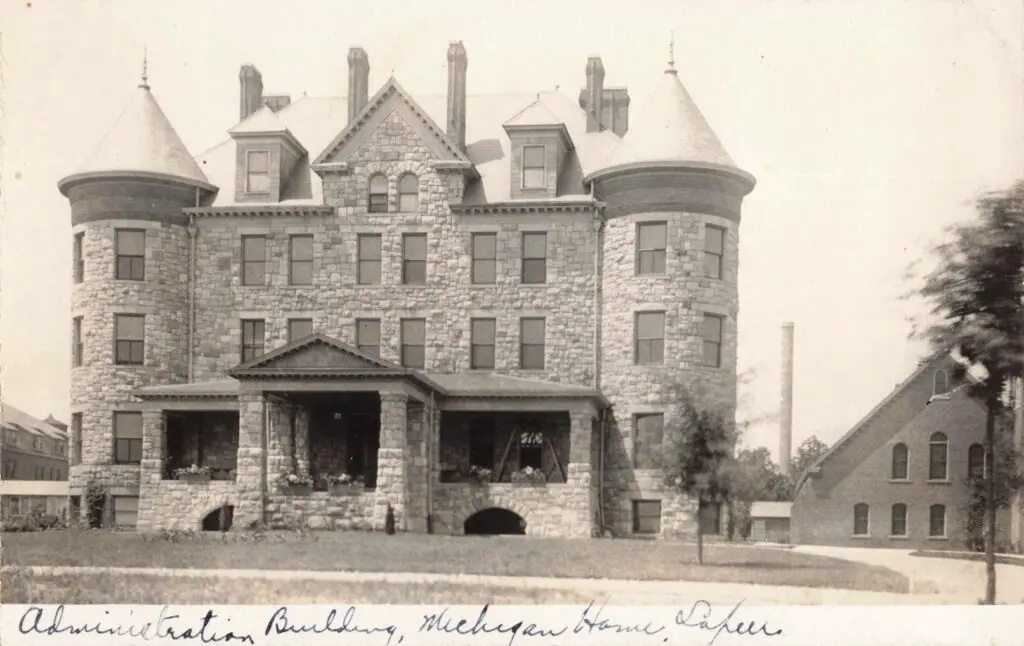
At its peak, Oakdale housed more than 4,500 residents and employed thousands of staff. The grounds included farms, workshops, dormitories, and medical facilities. It was a self-sufficient operation with its own power plant, chapel, and recreational areas. While Oakdale reflected progressive care ideals of the era, it also later became known for harsh policies, including forced sterilization. Still, for many years, it was Lapeer County’s largest employer and shaped the city’s economy and identity.
Daily Life in a Small but Busy Town
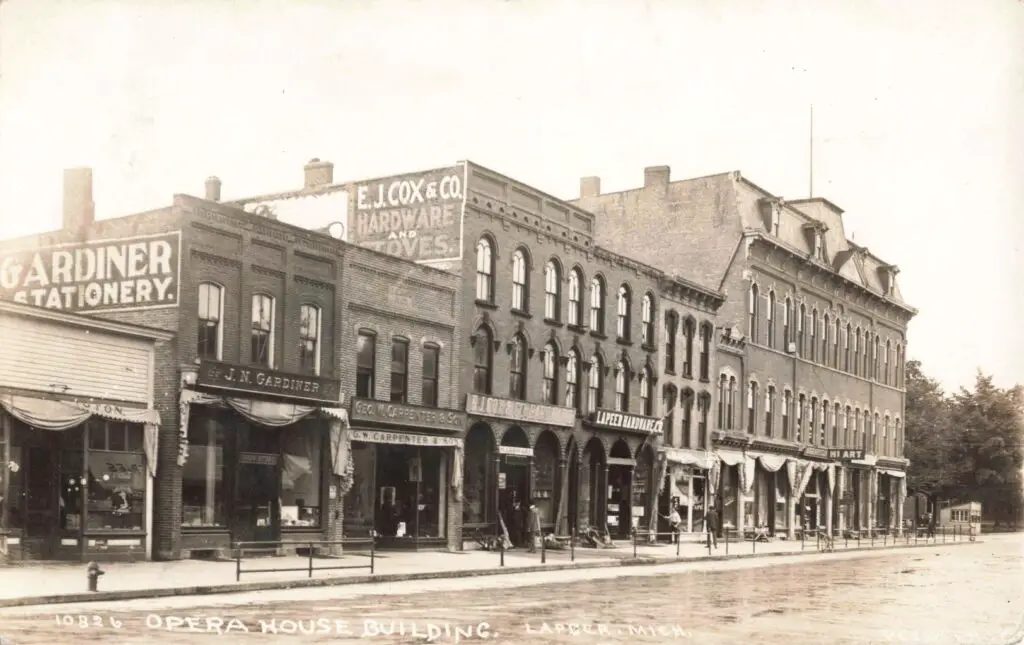
By the 1920s and 1930s, Lapeer had become a bustling county seat. Stores on Nepessing Street—like Lapeer Hardware, Economy Shoes, and Gardiner Stationery—served local customers. A large bank building stood at the main corner, and nearby was the brick Opera House building, which hosted shows, meetings, and civic events. One 1908 postcard shows rows of buggies and one early automobile parked along the street, a quiet nod to the coming shift from horses to cars.
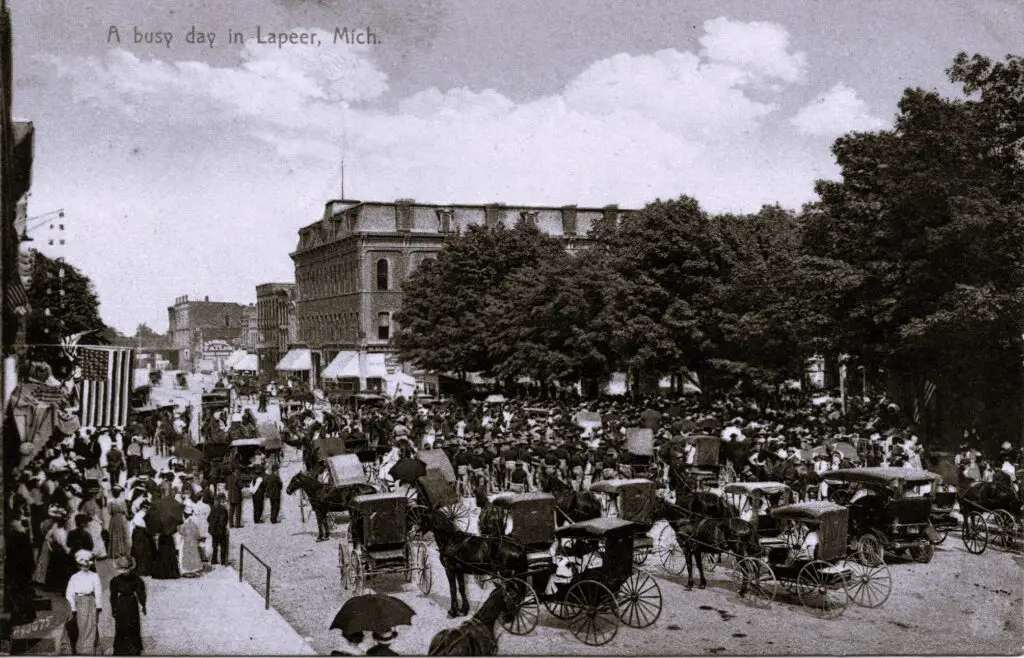
Each summer, townspeople gathered for Lapeer Days. The festival began in 1901 to mark the opening of the Bostick Stove Works. It became a local tradition, with music, parades, and pie contests. Today Lapeer Days is considered the largest free fair in Michigan. The Armory, built in the 1920s, served as a hub for the Michigan National Guard and for community events.
The World Wars and a Changing Town

Lapeer sent soldiers to both World War I and World War II. Veterans returned to work in factories, farms, and new construction. The city expanded gradually but kept its small-town feel. By the 1950s, it had paved roads, public schools, and growing subdivisions. Freight trains still rolled through town, but passenger rail declined.
Yet many of Lapeer’s early landmarks remained. The courthouse was still in use. The radio station still broadcast. The factory buildings, though some repurposed, still stood. Oakdale continued operating into the late 20th century.
Preserving the Past
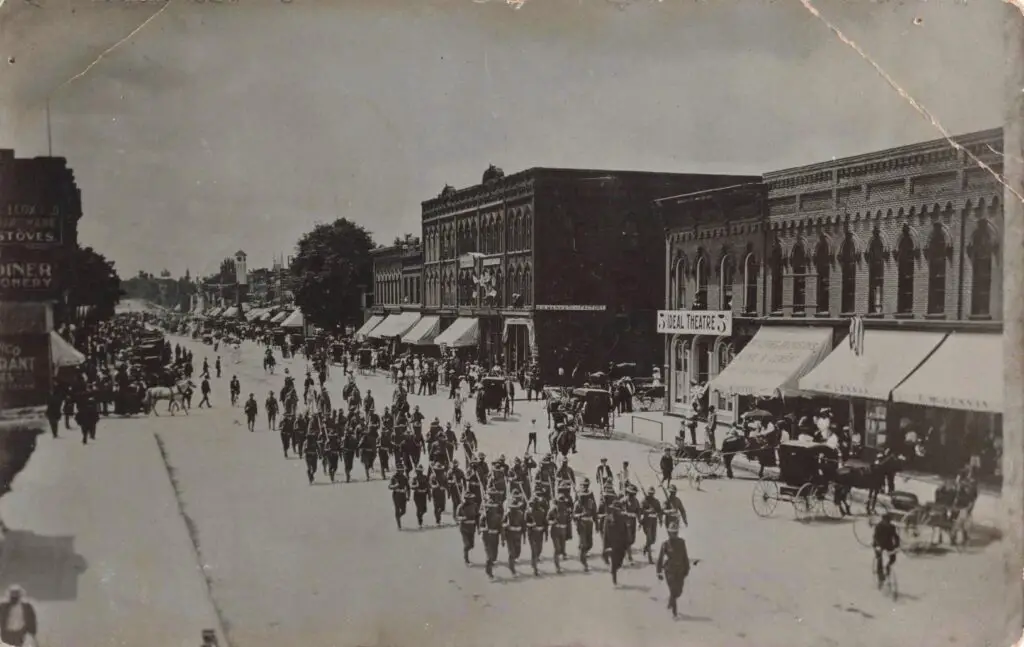
Today, Lapeer honors its history with restored buildings and a strong sense of place. The old courthouse is now on the National Register of Historic Places. The Grand Trunk depot has been preserved, and the Opera House block still anchors the downtown strip. Murals and signs reference the old stove works, cigar factories, and rail lines. WMPC remains on the air.
The history of Lapeer Michigan shows how one town grew from log cabins to civic squares, from rail depots to broadcast towers. While change came slowly, Lapeer adapted while keeping its institutions intact. Its past lives on in bricks, broadcast signals, and civic traditions.
Why Lapeer Michigan History Still Matters
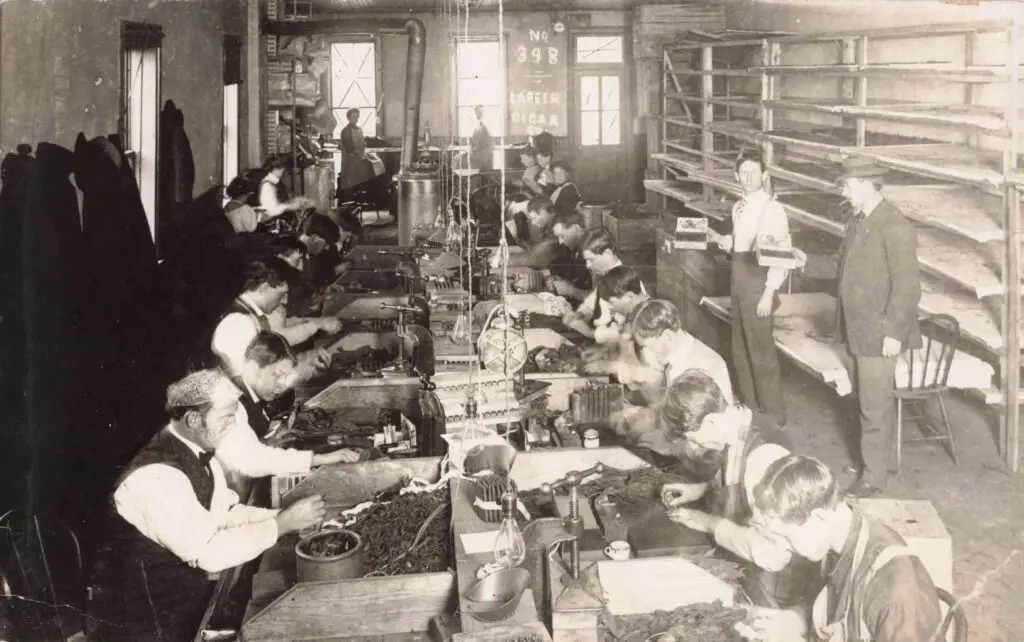
Through all this, Lapeer’s history is a living story of adaptation. From its lumber-mill roots in the 19th century to a diversified economy by 1950 – with factories, farms and a famous radio station – the city grew without losing its identity. Lapeer’s transformation is grounded in real people and places: the Hart and White founders, the church congregations, the families of mill and factory workers, and the local officials who kept the courthouse running. These images and facts show a city proud of its institutions and industrious spirit. They speak to the history of Lapeer Michigan as something built, piece by piece, by generations of citizens
